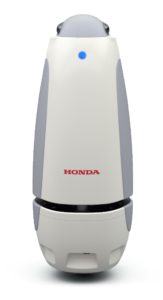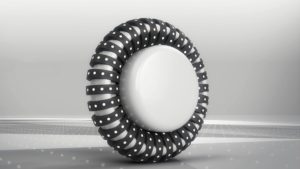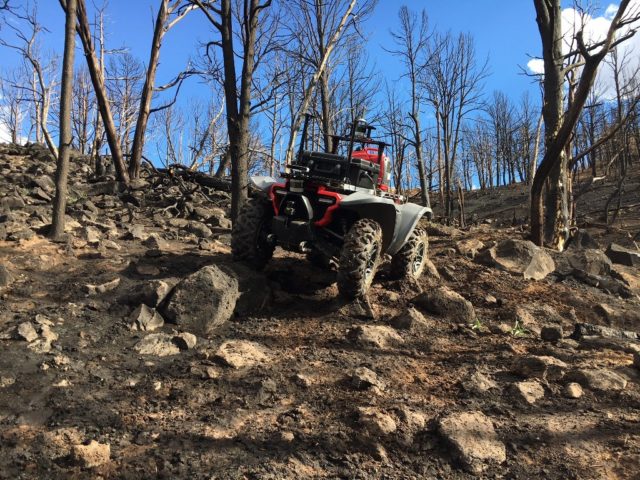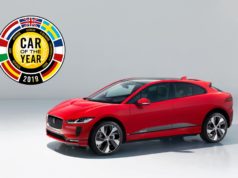Returning to CES with new technologies that aim to enhance people’s lives, Honda will showcase a variety of mobility, robotics, energy management, and connected concepts at CES 2019, January 8-11, 2019 that have the potential to create a cleaner, safer, and more convenient world. The company will feature demonstrations of in-vehicle connected services in the all-new 2019 Honda Passport. It will also provide a first look at real-world testing of the off-road Honda Autonomous Work Vehicle. That is a new category of vehicle dreamed up by Honda engineers. Honda’s CES exhibit highlights the company’s technology prowess in a broad range of areas. It offers as well a vision of collaboration with business and technology partners to create new categories of products.
Honda Innovations, the Silicon Valley arm of Honda R&D, will debut new collaborations with startups and major brand partners through its open innovation programs, Honda Developer Studio and Honda Xcelerator. Both serve as catalysts to discover and experiment with new technologies and concepts, further emphasising Honda’s commitment to open innovation.
“Honda is seeking new partners who want to join us in the development and user testing of our technology concepts, and CES provides a vast B2B marketplace to explore collaboration opportunities,” said Nick Sugimoto, Honda Innovations CEO. “Through open innovation Honda can create new value for mobility, accommodate people’s different lifestyles, and advance our vision toward a more enjoyable and collision-free society.”
The company will feature the following technology prototypes and concepts at CES 2019.
Honda Autonomous Work Vehicle: Increasing work efficiency
The automaker will show real-world testing scenarios of the Autonomous Work Vehicle. The prototype off-road vehicle is a combination of an all-terrain vehicle (ATV) and emerging advanced autonomous technology. It was designed by Honda R&D Americas to bring efficiencies and increased safety to the public, commercial, and consumer enterprises. The ATV can be in use in construction, agriculture, search as well as rescue and firefighting. The base is the proven ATV chassis with a 30-year history of accessing hard-to-reach locations with its four-wheel drive system. The vehicle features GPS and sensor-based autonomy capable of guiding the unit in almost any environment. It also has a rail accessory mount system for limitless accessories and attachments. The ATV has as well onboard power plug-ins.
The Autonomous Work Vehicle’s debut was at CES 2018 under the name 3E-D18. Since then, the company has worked with partners to beta-test and evaluate use cases in a broad array of work environments. These included a large-scale solar operations company in North Carolina, a wildland firefighting division in Colorado as well as an agricultural and environmental sciences college in California.
SAFE SWARM™: Creating a safer driving experience
SAFE SWARM™ is a concept that demonstrates the dream for a collision-free society through safe and smooth traffic flow using connected car technologies. The goal is to enable vehicles to wirelessly communicate and move fluidly and efficiently without a collision like a school of fish. Using Vehicle-to-Everything (V2X) technology, SAFE SWARM™ allows vehicles to communicate with surrounding vehicles. They also share key information such as location and speed. This information combines with the sensor suite on the vehicle. Then the driver or automated vehicle systems can determine the safest course of action in merging with traffic or avoiding a road hazard. Ultimately, the company believes that connecting all road users will create a safer transportation environment.
The SAFE SWARM™ concept can improve traffic flow by taking information from vehicles ahead to prevent potential traffic snarls. It can also take early braking action to help avoid a wave of emergency braking. Or to change lanes if needed. It does this through an on-board system with V2X communication as well as the existing sensors on the vehicle and even sensors in the infrastructure.
After introducing the SAFE SWARM™ concept at CES 2017, the automaker has been conducting closed course testing. It will next evaluate the concept in a real-world environment on the 33 Smart Mobility Corridor in Ohio. The plan is that to become the longest stretch of continuously connected vehicle-to-infrastructure roadway in the world.

Robotics: Enhancing people’s lives
The company is developing a variety of robotics technologies to carry out its vision of a future where robotics devices support people and enhance human potential. The P.A.T.H. (Predicting Action of the Human) Bot is a robot specialized in moving smoothly around public places without interfering with people. It has artificial intelligence. P.A.T.H. also uses an onboard camera and sensors to identify its location and recognise its surroundings. That allows it to move from one destination to the next while avoiding obstacles and selecting the optimal route.
To make the development of robotics solutions easier, the automaker will introduce the Honda RaaS (Robotics as a Service) Platform. This software platform concept offers common functions, including data storage/sharing, communication control, state transition, and robot-to-robot cooperation through an interface or package such as API*2 and SDK*3. Honda aims to facilitate the seamless integration of robotics services by enabling coordination among robotics devices, systems and applications developed by Honda and various development partners. To realize this technology, Honda seeks to collaborate with robotics device developers and robotics solution providers.

Rounding out the robotics display is Omni Traction Drive System, a mechanism that enables omni-directional mobility. Originated from its robotics research, Omni Traction Drive is the driving system of UNI-CUB, Honda’s self-balancing personal mobility device.
Wireless Vehicle-to-Grid: Reducing CO2 while creating new customer value
The Japanese automaker will debut its Wireless Vehicle-to-Grid (V2G). That is a bi-directional energy management system that has the potential to reduce CO2 and create new value for customers. The growing popularity of electric vehicles (EVs) has the potential to strain the power grid. That leads to the increased use of non-renewable energy sources to meet demand, which will result in greater carbon emissions. Recognising that batteries in vehicles also can be used as storage to help balance supply and demand, EV owners will be able to participate in the V2G program. They will receive compensation from utility operators who benefit from the use of EVs to balance the grid’s energy supply.
Unlike charging with a conventional charging cable, the system enables noncontact charging and discharging of an EV by parking on a charging pad, which makes the charging experience more convenient for customers. Honda has developed this Wireless Vehicle-to-Grid with WiTricity, the industry pioneer in wireless power transfer over distance. The Honda Wireless Vehicle-to-Grid can help eliminate the gap between supply and demand of electricity by charging EVs when power generation is greater than power consumption, and by discharging electricity from EVs to the power grid when consumption is greater than generation. To put this system in practical use, Honda is interested in collaborating with energy-related companies, including aggregators and electric companies.
Honda Innovations: Advancing collaboration
Honda Innovations collaborates with startups and established corporate partners to create cutting edge products and services through its open innovation programs, Honda Developer Studio and Honda Xcelerator.
At CES, Honda Developer Studio will use the all-new 2019 Honda Passport to demonstrate the enhanced Honda Dream Drive experience. Honda Developer Studio and DreamWorks Animation teamed up to produce Honda Dream Drive, a virtual reality experience synchronised with the motion of the vehicle for CES 2017. Since then, the Honda Dream Drive platform has been expanded to provide more features and functionality, and encompasses applications for both drivers and passengers.
Honda Dream Drive: Driver demonstrates the expansion of in-vehicle payment technology concept
It enables customers to make restaurant reservations, pay for goods and services like fuel, movie tickets and parking. They can also share the driver’s location. And all is possible from the connected car mobile wallet. Dream Drive: Passenger offers mixed reality games, movies and travel applications, as well as control of radio and cabin features – all from the passenger’s mobile device. The more robust platform will also debut a concept rewards system. It allows customers to earn rewards.
Honda Xcelerator will highlight its collaborations with startups Noveto Systems and Perceptive Automata to develop driver assistive technologies. They will demonstrate 3D audio technology leveraging Noveto Smart Audio™ technology – developed independently by Noveto. It sends targeted audio signals to each of the user’s ears. This way the driver receives intuitive audible cues without requiring them to take their eyes off the road. This technology will enhance the driver’s spatial awareness of their surrounding environment. It will warn the driver of hard-to-see objects detected by onboard sensors as well as delivering a more intuitive navigation experience.
With Perceptive Automata, Honda Xcelerator will showcase their collaboration for safer and smoother traffic flow. And that includes both human drivers and autonomous vehicles. Perceptive Automata gives autonomous vehicles human-like intuition. This way they will be able to understand the state of mind of pedestrians, bicyclists, and human drivers through real-time analysis of onboard sensor data. CES attendees will learn more about these collaborations through interactive exhibits.
Keep going forward, even when the weather wants to move you backward, with available all-wheel drive in the #HondaCRV. pic.twitter.com/XctiHz9Deb
— Honda (@Honda) December 6, 2018
































